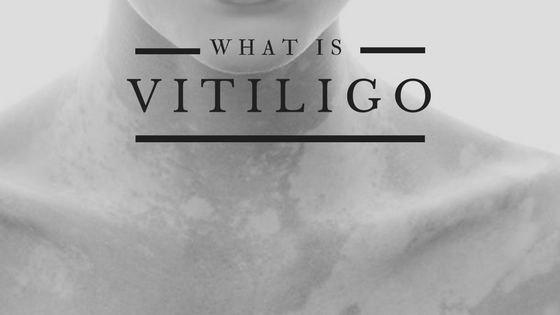Once you are diagnosed with vitiligo, a common question passing your mind could be “what caused it”. Don’t worry; it’s not only you. The lack of effective treatment and many speculations about its cause(s) can leave anybody overwhelmed. To help you know vitiligo much better, here is your knowledge guide to let you know the best cure for vitiligo (if there is any).
What is Vitiligo?
Vitiligo is a long-term skin condition that instills the loss of pigmentation in different parts of the body. Due to the disorder’s progression, white patches appear and grow on different body parts and ultimately become white over the period of time. These patches, typically having sharp margins, often start on areas of skin that are exposed to the sun (such as the face, neck, and hands). Depending on the disorder’s aggression, white patches may leave hair color to go white with the skin. They may even enter the mouth and nose. At times, scar formation in vitiligo can result in a gradual development of a white patch.
Even though vitiligo is not life threatening and contagious, it may potentially lead to psychological stress. If stigmatized for their condition, people with vitiligo may experience low self-esteem, anxiety, depression, and other mood disorders. Due to bad self-image, they may not want to go out in public and may limit their social interaction.
About 1% of the world’s population is affected by the disorder, affecting all races, gender and age groups equally. About 50% of people affected by vitiligo experience the disorder before the age of 20. Most of the people develop it before the age of 40.
Unlike Albinism, people with vitiligo are born with pigmentation capacity in their skin. As the melanocytes die over time, white skin appears. Sometimes, vitiligo can be confused with leucoderma due to similar treatment approach. The treatment for both skin disorders focuses on re-pigmentation and immunity improvement. To know the difference between both, read 6 differences between vitiligo and leucoderma.
Types of vitiligo
The spreading tendency of vitiligo-induced white patches is unpredictable. Sometimes, the de-pigmented skin is localized while at times, there is the ultimate destruction of melanocytes in a particular area. On such basis, vitiligo can be classified into 2 types – segmental and non-segmental. In segmental vitiligo, the affected area of the skin usually does not expand with time. On the other hand, non-segmental vitiligo affects both sides of the body as the affected area typically expands with time. As confirmed by various studies, 90% of vitiligo cases are non-segmental. A tissue biopsy can help a dermatologist distinguish the difference.
In some cases, both non-segmental and segmental vitiligo co-exist. This kind is known as Mixed Vitiligo in common language.
Possible Causes
At times, the immune system mistakenly destroys the melanocytes (the cells responsible for pigmentation) in the skin. This may result in vitiligo in certain prominent skin areas. Many researchers firmly believe that in the event of vitiligo, the melanocytes destroy themselves.
While the exact cause of vitiligo is subject to many research studies and is still unknown, it has been closely linked to genetics. The risk factors for the skin disorder include a family history of the same condition or other autoimmune diseases (such as alopecia areata, hyperthyroidism, and pernicious anemia).
Several studies have also found out that vitiligo can be triggered by hormonal changes, recurrent episodes of jaundice or typhoid fever, prolonged antibiotic treatments and acute emotional trauma. Some experts even argued that the intake of insecticide/pesticide treated vegetables, sunburn, usage of heavy immunosuppressant drugs, odd food combinations, emotional distress, regular junk food intake and negligence in hygiene can cause the depigmentation.
Sadly, due to conflicting results of different studies, all above mentioned factors have not been proven to cause vitiligo.
Treatment options – Best cure for vitiligo
While preventing the condition like vitiligo is hardly possible, the appearance of the affected skin can be improved with cosmetics. Many people have found UV light therapy, lightening the skin in unaffected areas, or a skin graft helpful. Applying certain steroid hormone creams to the affected area could also facilitate re-pigmentation if used in the early stage of the condition.
As many experts firmly believe that vitiligo can be caused by mental stress, avoiding undue psychological stress can help an individual pause or slow the progress of the disorder. This is where Pranayama discipline of Yoga can help.
Consuming ginger juice and goosefoot juice can help. Turmeric and mustard oil paste, a mixture of margosa leaves and honey juice, tamarind seed paste, pomegranate powder and black gram paste are considered helpful home remedies. However, the best cure for vitiligo is subject to many ongoing studies.

